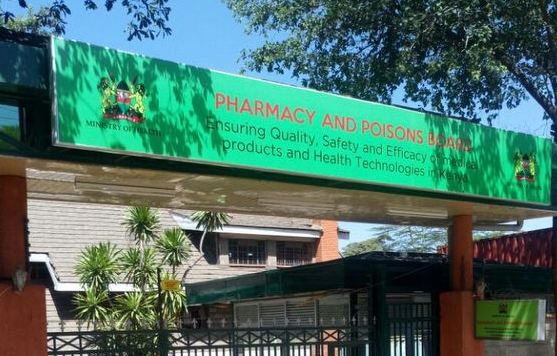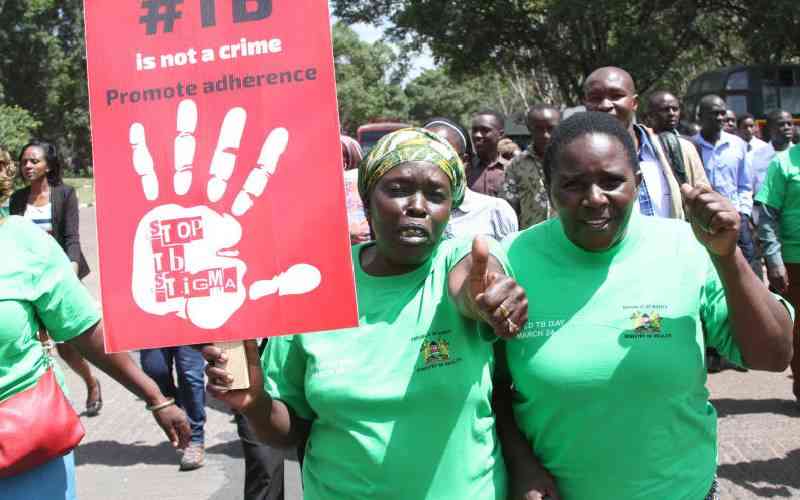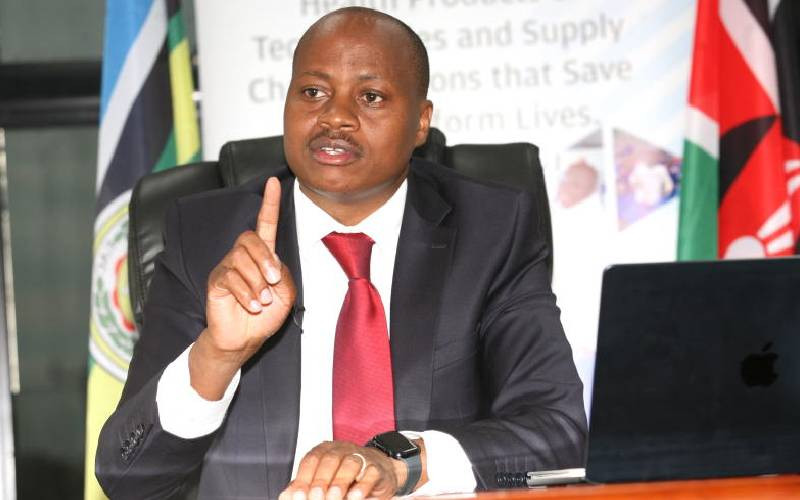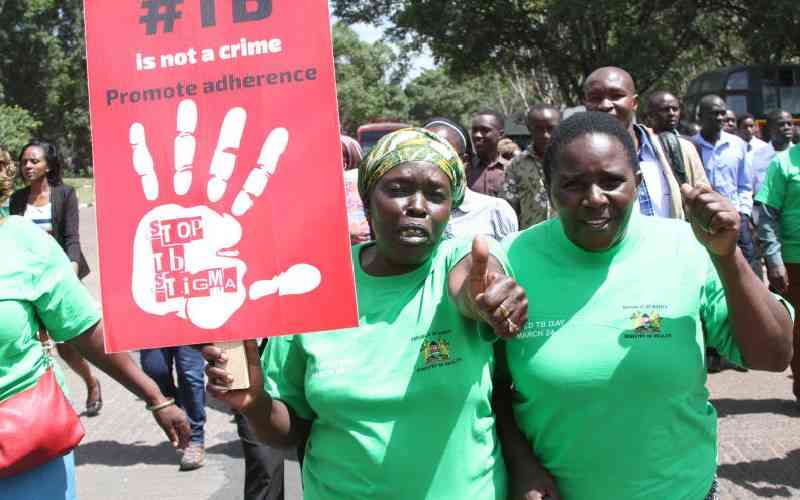Kenya’s HIV prevalence now stands at 4.9 per cent which signifies notable progress made in the last six years, according to the latest report.
It is an improvement from 2012 when the percentage stood at 5.6 per cent, according to the Kenya Aids Indicator Survey (Kais).
The latest numbers by the Kenya Population-Based HIV Impact Assessment (Kenphia) report also show there are 1.3 million people in the country living with HIV.
According to the preliminary report, the HIV incidence rate in 2018 stood at 36,000. This means there were 14 HIV infections for every 10,000 people in the country.
In 2012, as recorded in the Kais report, the incidence rate stood at 0.5 for every 100 persons, which was equivalent to 106,000 infections.
Much of the progress in lowering the prevalence rate has been attributed to having more sick Kenyans on anti-retroviral therapy.
“We have close to 1.1 million persons now on treatment,” said head of National AIDS and STI Control Programme Catherine Ngugi.
The widespread treatment has been possible because of financial support from the US Government under the Presidential Emergency Plan for Aids Relief (Pepfar), and the Global Fund.
“Since 2004, the US Government through Pepfar has invested nearly Sh700 billion into HIV response,” said US Ambassador Kyle McCarter.
Great burden
Mr McCarter said the Kenphia report would be key in evaluating progress as well as understanding the impact of HIV programmes and investments.
“We have confirmed that while the greatest burden of HIV remains in western Kenya, there are also high rates of viral suppression that demonstrate that ART treatment is working and people living with HIV and on treatment are controlling the infection and, therefore, are unlikely to pass the virus to others.”
From the report, which is based on 2018 numbers, at least 79.4 per cent of Kenyans below the age of 64 know their HIV status, 95.7 per cent who are HIV positive are on treatment, and 88.4 per cent of those on treatment have achieved viral suppression.
The numbers revealed by the report are in line with an ambitious treatment target for 2030 set by UNAids dubbed 90:90:90.
The UN had stated that it would be impossible to end the HIV epidemic without bringing treatment to all who need it.
According to the plan, by 2020, 90 per cent of all people living with HIV will know their HIV status, 90 per cent of all people with diagnosed HIV infection will receive sustained antiretroviral therapy, and 90 per cent of all people receiving antiretroviral therapy will have viral suppression.
Chief Administrative Secretary in the Ministry of Health Rashid Aman said the new HIV numbers showed there was a reduction in the number of infections.
“This is a notable outcome that Kenya is on the way to achieve epidemic control,” said Dr Aman.
He noted that even as most of the 1.3 million people living with HIV were on treatment, questions had to be asked about why others were not accessing the life-saving drugs.
 The Standard Group Plc is a multi-media organization with investments in media platforms spanning newspaper print
operations, television, radio broadcasting, digital and online services. The Standard Group is recognized as a
leading multi-media house in Kenya with a key influence in matters of national and international interest.
The Standard Group Plc is a multi-media organization with investments in media platforms spanning newspaper print
operations, television, radio broadcasting, digital and online services. The Standard Group is recognized as a
leading multi-media house in Kenya with a key influence in matters of national and international interest.











